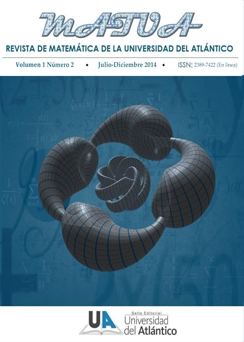DEVELOPING A GUI IN MATLAB FOR SIMULATION REFRACTION PHENOMENON BY FDTD
Abstract
The finite difference time-domain (FDTD) has proved a useful tool for the analysis of electromagnetic phenomena. This paper presents a graphical application based on MATLAB GUIDE, in which the implementation of the finite difference algorithm is shown in the time domain, to simulate the phenomenon of refraction is presented. Absorbing boundary conditions (ABC) type of perfectly matched layers (PML) will be introduced, as this is a problem of time evolution with unbounded domains.
Visitas al artículo
Downloads
References
A.TAFLOVE, S. HAGNESS (2005) Computational Electrodynamic the finite-difference time-domain method. Artech House, Boston, London.
DENNIS M. SULLIVAN (2000) “Electromagnetic Simulation Using the FDTD Method”. IEEE PRESS.
Valéria de Magalhaes Iório. EDP um curso de graduacao. Instituto de matem´atica pura y aplicada IMPA, Rio de janeiro, 1991.
Moysey Brio, Aramais Zakharian & Gary M. Webb. Numerical Time-Dependent Partial Differential Equations for Scientists and Engineers. C.K Chui, Stanford University, 2010.
Univ. de Extremadura. Apuntes de ecuaciones diferenciales, Dpto. de Matem´aticas. Badajoz-España, Mayo 2013.[Documento en línea]. http://matematicas.unex.es/ ricarfr/Ec-Diferenciales/LibroEDlat.pdf.
Ignacio Gracia Rivas & Narciso Román Roy. Apuntes de ecuaciones diferenciales, Departamento de de Matemática Aplicada IV, Barcelona Españaa, Octubre 2008. [Documento en línea]. http://www-a4.upc.edu/ nrr/docs/edteor.pdf.


